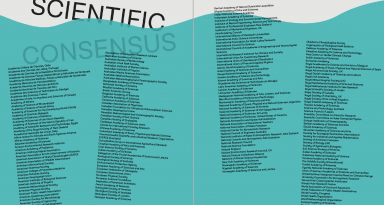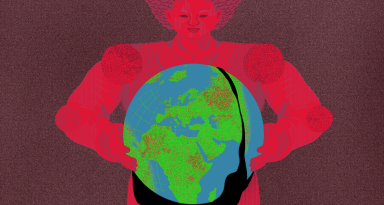In 1896 Svante Arrhenius built a CO2 climate model; 99 years later the IPCC noted that CO2 remained the most important contributor to climate change.

1896: Svante Arrhenius builds a climate model showing the influence of atmospheric carbon dioxide (CO2).
1899: Thomas Chrowder Chamberlin wrote about how changes in climate could result from changes in the concentration of atmospheric carbon dioxide in An Attempt to Frame a Working Hypothesis of the Cause of Glacial Periods on an Atmospheric Basis.
1930: Milutin Milankovitch writes “Mathematical Climatology and the Astronomical Theory of Climate Changes” to outline the Earth’s climate cycles, particularly the Ice Ages.
1938: Guy Stewart Callendar presents evidence that both temperature and the CO2 level in the atmosphere had been rising over the past half-century.
1957: Hans E. Suess and Revelle examines the uptake of CO2 by the oceans, with Revelle writing that “human beings are now carrying out a large scale geophysical experiment”.
1960: Charles Keeling develops a curve (called the Keeling Curve) to track rising atmospheric CO2 concentration. The CO2 concentration in 1960 is 315 parts per million.
1965: A report titled “Restoring the Quality of Our Environment” by the US Science Advisory Committee warns of the harmful effect of fossil fuel emissions.
1972: Meteorologist John Sawyer publishes the study Man-made Carbon Dioxide and the “Greenhouse” Effect in which he accurately predicts the rate of global warming from 1972-2000 (0.6 C).
1974: US chemists Mario Molina and Sherwood Rowland publish an article in Nature outlining the threats to the ozone layer from chlorofluorocarbon (CFC) gases.
1979: World Climate Conference of the World Meteorological Organization conclude that “it appears plausible that an increased amount of carbon dioxide in the atmosphere can contribute to a gradual warming of the lower atmosphere”.
1987: Montreal Protocol, an international treaty to protect the ozone layer, is signed.
1988: At the World Conference on the Changing Atmosphere: Implications for Global Security, hundreds of scientists declared that by 2005 the world would be well-advised to push its emissions some 20% below the 1988 level.
1990: First Intergovernmental Panel on Climate Change report is published, noting the pattern of warming in the past and that warming is the future is likely.
1992: UN Framework Convention on Climate Change in Rio is opened for signature at the Earth Summit, with the aim to “stabilise greenhouse gas concentrations in the atmosphere at a level that would prevent dangerous anthropogenic interference with the climate system”.
1995: The Second Intergovernmental Panel on Climate Change report is published, stating that “carbon dioxide remains the most important contributor to anthropogenic forcing of climate change; projections of future global mean temperature change and sea level rise confirm the potential for human activities to alter the Earth's climate to an extent unprecedented in human history”.
1997: Kyoto Protocol, which aims to limit greenhouse gas emissions, is created. The largest emitter in the world (USA) doesn’t sign on.
2001: The Third Intergovernmental Panel on Climate Change report is published, stating that warming due to greenhouse gas emissions is “very likely” and that emissions of greenhouse gases and aerosols due to human activities continue to alter the atmosphere in ways that are expected to affect the climate.
2006: China overtakes the USA as the largest emitter in the world.
2007: The Fourth Intergovernmental Panel on Climate Change report is published, stating that “most of the observed increase in global average temperatures since the mid-20th century is very likely due to the observed increase in anthropogenic greenhouse gas concentrations”.
2014: The Fifth Intergovernmental Panel on Climate Change report is published, stating that there is a clear human influence on the climate and that warming of the atmosphere and ocean system is unequivocal.
2015: The Paris Agreement on climate change mitigation, the replacement for the Kyoto Protocol, is adopted by most of the world (200 countries), including the USA.
2017: US President Donald Trump announces that the USA is going to withdraw from the Paris Agreement, stating that “The Paris accord will undermine (the U.S.) economy”.
2020: USA set to withdraw from the Paris Agreement in November 2020.




































